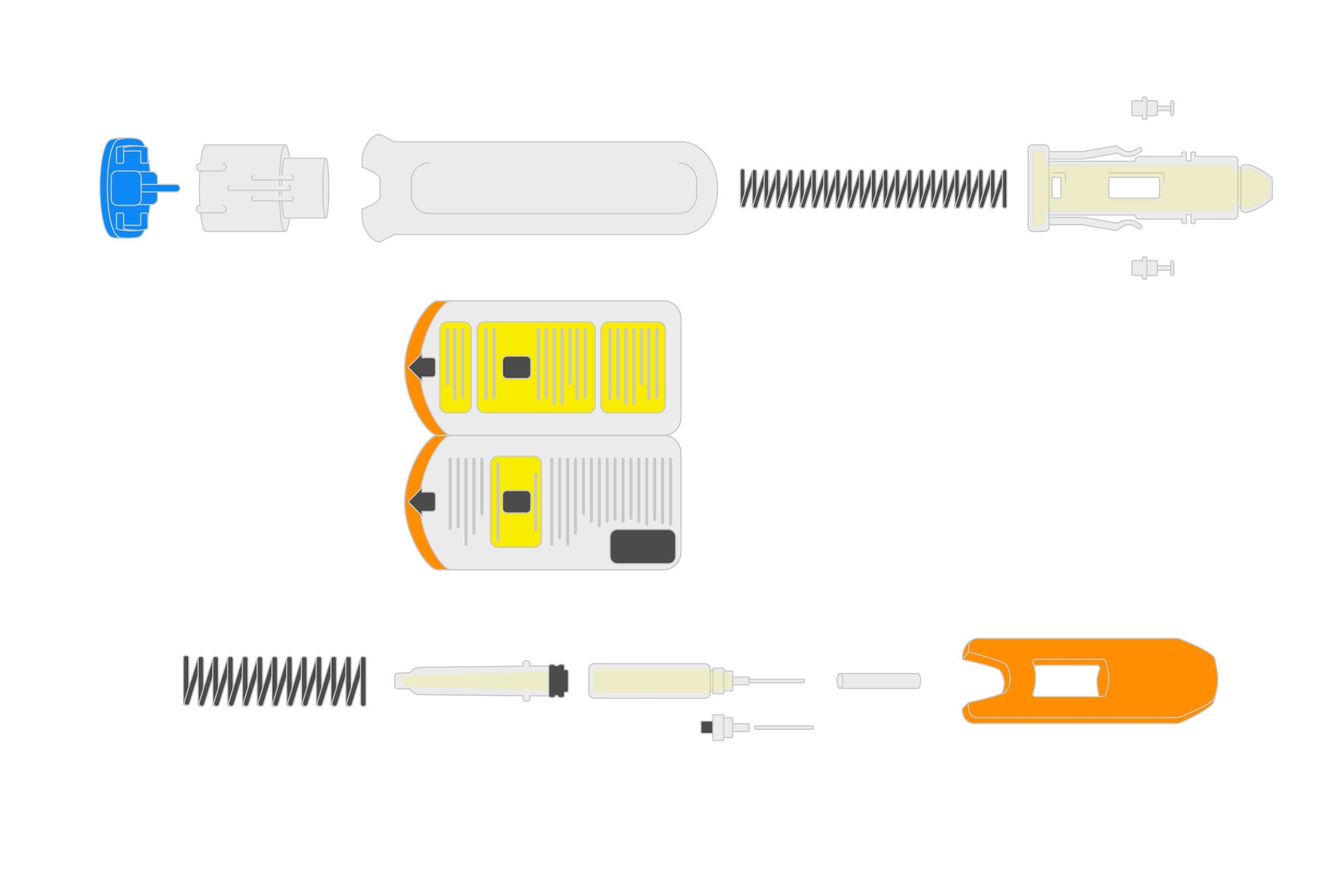Irreversible damage caused by climate change can only be prevented if companies initiate their journey to significantly reduce their greenhouse gas emissions. With enough CO2 emissions to make it the 5th highest emitting country in the world, it is imperative for the healthcare sector to act now and pioneer the transition to net zero. Without the support of procurement they would not succeed.
Addressing sustainability and climate change within Healthcare
Healthcare leaders globally recognize the need for embedding sustainability within their companies, with many establishing a sustainability roadmap and outlining initiatives. The targets are more ambitious in comparison to other industries, with many companies looking to reduce all scope GHG emissions by >40% by 2030 and achieve net zero by 2045. Novo Nordisk stands out as a frontrunner, looking to achieve a target of net zero across scopes 1 and 2 by 2030 already. Strategic partnerships between competitors are being formed to tackle the issues collaboratively and work towards the ambitious target, with the likes of the Sustainable Market Initiative Health Systems Task Force established. The collaborative approach and willingness to change has enabled healthcare leaders to define initiatives such as renewable energy utilization, circular economy implementation, consumption reduction and more.
Healthcare challenges to achieve net zero
Although the industry is already a step forward, there are still quite a few challenges to achieve the ambitious targets. Due to the size of the value chain, data gaps can exist making it difficult to baseline emissions accurately and limits data-driven decision making. The healthcare sector is also heavily regulated, which may lead to difficulties and delays in decarbonization initiative implementation if patients may be put at a risk. Finally, as with most transformations there is a balance between complexity and cost of implementation. To become truly carbon neutral efficiently and effectively will require meticulous planning, else may pose a risk of high investment cost requirements.
Healthcare’s main emission driving categories
There are clear high-yield focus areas for companies to begin their decarbonization journey. Across the industry, supply chain of products accounts for 50%+ of the CO2 emissions on average, with 3 main emission driving categories: logistics (e.g. international freight), raw materials (e.g. packaging) and energy (e.g. material processing). Despite it being a challenging and dynamic market, it also provides a unique opportunity for the healthcare industry to be at the forefront of sustainability, innovation and become a market leader early on.
Elevating procurement to be a strategic sustainability driver in healthcare
Many companies are starting to understand the need for procurement to be involved within their sustainability strategies, however, this is still looked at on an operational level and is underestimated. Companies will not be able to significantly reduce their emissions without procurement as a strategic partner; to truly understand why, we need to take a step back to understand where emissions come from.
Sustainability strategies need to encompass all carbon emissions – scope 1 to scope 3 to enable net zero, however, it is evident that emphasis needs to be placed on scope 3 emissions (indirect emissions throughout the value chain) by forensically evaluating the supply chain including a company’s suppliers. It is crucial to leverage procurement strategically, as they have the capabilities and tool-kit to not only create much-needed transparency which is required to define a realistic sustainability strategy, but are able to collaborate with suppliers to drive the sustainability agenda.
Procurement also has the knowledge and insights into supplier partnerships, product specification and cost optimization which enables them to drive the strategy. As outlined, companies can only be able to achieve net zero if they invest in and elevate their procurement to become a leader.
remaining indirect emissions through-out the value chain
indirect emissions from purchased energy
direct emissions from company’s activities
Packaging plays a major part for health care throughout the entire value chain; whether it is the packaging required for transportation of active pharmaceutical ingredients, sample tests, or even the final branding of when selling to consumers, the sheer volume is massive. It is critical to comply to stringent regulations (e.g. labelling), but also protects the medical products and ensures long shelf-life. From a consumer-lens, packaging acts as a conduit for instructions and information, and also provides to the overall patient experience depending on ease of useability. Although it is important to ensure the packaging complies with guidelines, it is one of the less complex shifts in the health care value chain that can lead to significant emissions reductions.
Current packaging within healthcare relies heavily on plastics, cardboard, paper, glass, aluminium and laminates. There is a large variety of materials due to regulatory requirements as well as material characteristics required; for example, paper and cardboard are more frequently used for secondary packaging, whilst aluminium is used to its ability to protect against external conditions. The different requirements create challenges in standardizing and enacting a shift, and also requires companies to assess the cost to sustainability ratio to determine feasibility. However, there are still various levers that can be implemented to promote sustainability. Companies can look to:
- Avoid: Remove non-required packaging / design products to avoid packaging e.g. remove single-use foil wrapping
- Reduce: Right-size packaging to reduce empty space e.g. lightweighting packaging to reduce excess waste
- Recycle or Reuse: Aim for full circularity by increasing recyclability e.g. use monomaterials to enable localized recycling such as PET
- Transform: Develop and utilize novel eco-friendly materials such as bioplastic e.g. replace current packaging with biodegradable alternatives such as PLA
- 1. Product and packaging redesign e.g. reduce material and energy use
- 2. Process efficiency e.g. solvent reuse, digitalization
- 3. Renewable power e.g. onsite solar, renewable sourcing
- 4. Renewable heat & steam (low-mid temp) e.g. electrification, biomass
- 5. Regenarative agriculture e.g. reduce deforestation, livestock management
- 6. Carbon capture and storage e.g. CCS storage facilities
- 7. Renewable heat (high temp) e.g. electrification, biogas, green hydrogen
- 8. Clean transport e.g. electrification, fuel switch
- 9. Feedstock switch e.g. biomass, green hydrogen
Whilst the packaging optimization poses a great area of opportunity, it is important to ensure that the functional aspects of the packaging are not diminished especially on the regulatory and safety side. By embedding sustainability, not only can companies reduce their carbon emissions, but they can also highlight the tangible impact to customers. In the current world where there is a growing consumer demand for eco-friendly products, this can have a significant benefit to brand perception and boost shareholder value.
As indicated, a high impact starting point for many organizations is to redesign their products and packaging as this can reduce emissions directly with much lower implementation and investment efforts. Packaging is a key focus area for emissions, with approximately 25% of hospital waste attributed to plastic. The global packaging market for healthcare is also expected to grow by 6%+ annually until 2027. Due to the nature of packaging utilization in healthcare such as the risk of contamination, there is a ‘single-use’ culture with much of the material being disposed of in landfills or incinerated which will continue to increase with the industry’s growth. There is a requirement and opportunity for Procurement to assess the current operations and embed sustainable practices not only internally, but also across an organizations value-chain with suppliers to reduce the environmental impact.

Sustainability in healthcare:
Climate change as a global call to action
The impact of climate change is undeniable, evidenced by surging extreme weather events, rising global temperatures, and biodiversity loss. Businesses also face major operational risks, such as supply chain disruptions and resource scarcity, making it a pivotal moment to act now. Governments have pledged to limit temperature increase to 1.5°C
With more than 4,000 businesses setting science-backed emission reduction goals through the Science Based Targets initiative (SBTi), it is imperative for companies to define and implement a clear strategy to protect our environment. Regulations such as the Supply Chain Act are also being set to oblige sustainable practices. Failing to act can place a company at large risk of fines (~2% of revenue) and can additionally cost the global economy an estimated $1.7 – $3.1 trillion per year by 2050. Consumer trends also favour sustainable products and services, elevating this shift from an ethical concern to a shareholder priority. Embracing & embedding sustainability is no longer optional. It is a strategic necessity for companies to stay competitive and foster innovation.
Get to know our healthcare and sustainability experts
Discover further insights in healthcare and sustainability





